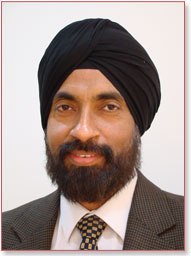New Delhi: While extrapulmonary Tuberculosis, being a lesser known complication can have serious consequences, if not treated on time. TB has always been related to be a pulmonary disease, but in fact if left untreated, it can spread to various parts of the body and the most common site being the spinal cord.
The symptoms of extrapulmonary TB being similar to that of arthritis in its nascent stages, it often goes misdiagnosed for the latter. While bone TB can attack any site in the body, the usual victims are the weight bearing joints like hands, wrist, elbows and the spine. The increased bacterial activity causes severe pain in the affected parts that patient need to understand the urgency of intervention.
The type of pain too depends on the exact location of the tuberculosis and in order to distinguish it from arthritic pain, patients should observe the nature of pain. For instance, most of the arthritic patients experience relief at night whereas those suffering from bone TB have elevated discomfort while lying down flat.
According to medical statistics, around 10-15 per cent of the total TB patients in India suffer from bone TB and the numbers are constantly increasing. India is home to about one lakh people who suffer from osteoarticular tuberculosis which leads to limb shortening in growing children and full body paralysis in a few cases.
“Usually diagnosis can be made with radiology tests like X-ray, CT scan or MRI, other lab tests on fluid aspirates from the affected joints may be done for confirmation. Spinal TB usually affects the middle part of the spinal cord known as the thoracic, leads to constant and unbearable back pain along with stiffness. In severe and chronic cases, abscesses develop in the affected joints. Timely treatment can prevent the spread of the bacteria to other parts of the vertebrae and discs. Spinal TB is severe because if not detected and treated in time, the disease can cause severe paralysis which may take years to get cured.” Said Dr Satnam Singh Chhabra, Head Neuro and Spine department, Sir Gangaram Hospital
Patients with bone TB are generally not contagious because the disease spreads through coughed up active virus particles unless you come in contact with a patient’s pus. Another important point to remember is that bone TB may affect the bone marrow, so timely and complete course of treatment can only cure the patients. Duration of treatment will depend on the location and severity of the infection. But unlike TB of lungs, Bone and Spine TB takes a little longer depending on the severity of infection.
“The treatment for normal bone TB may last at least one year and in case of Spine TB causing paralysis treatment and recovery time depends if paralysis is mild, moderate or severe. Patients with TB in their bones might or might not exhibit generalised signs of tuberculosis such as fever, fatigue, night sweats and unexplained weight loss.” He added






